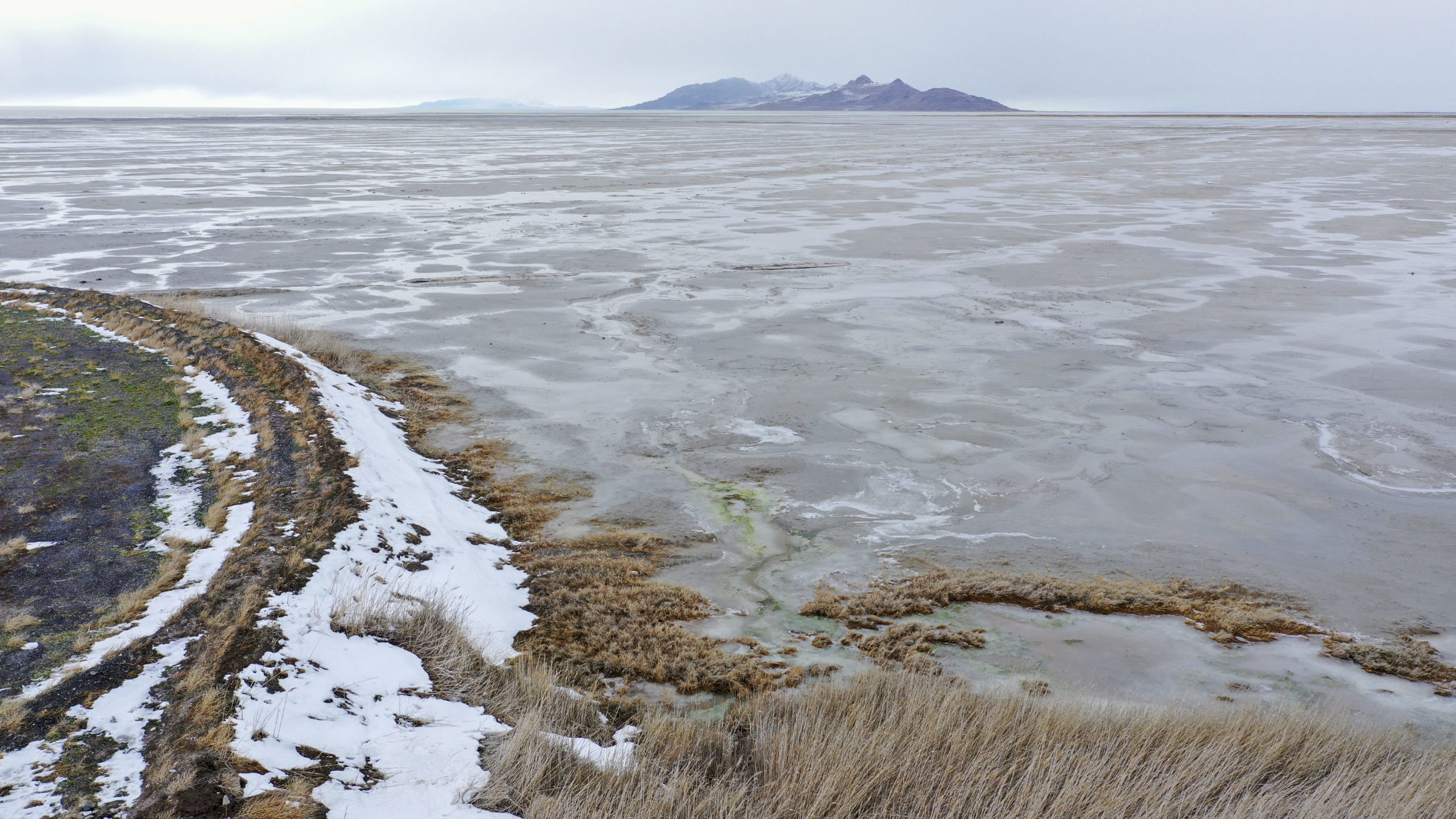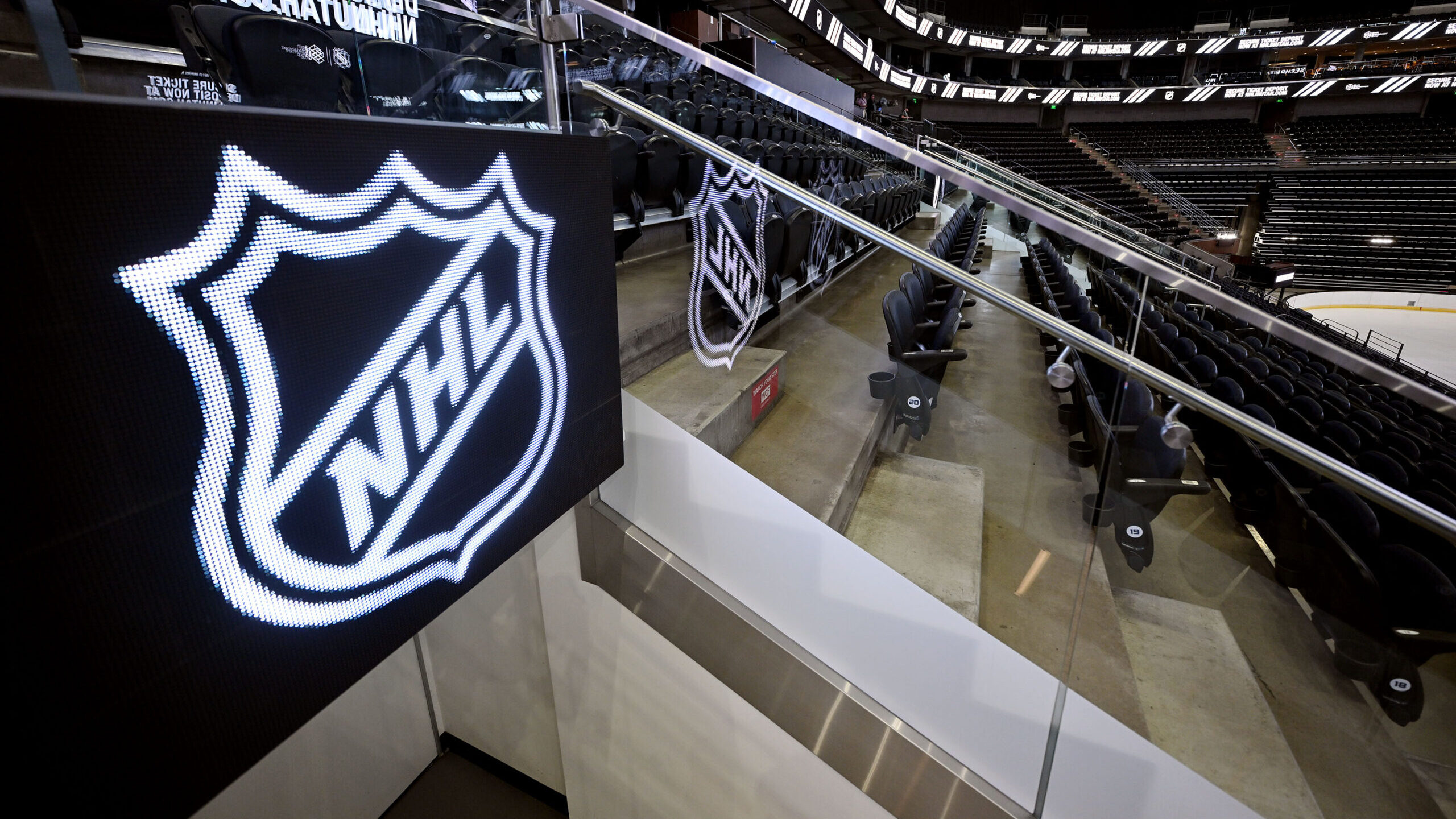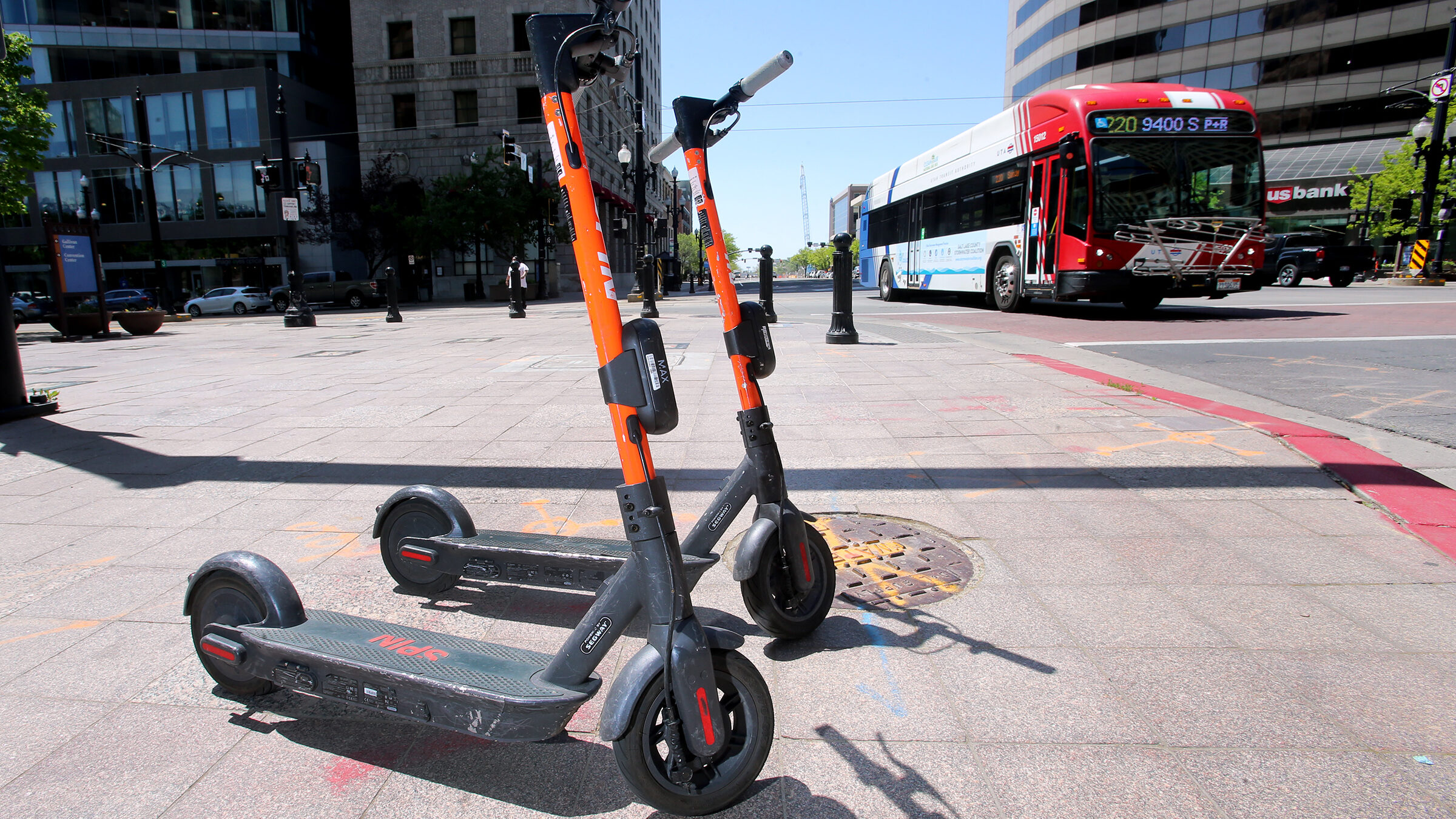How a change in Utah water law will help Great Salt Lake
Mar 17, 2022, 7:15 AM | Updated: Jul 18, 2022, 10:58 am

Low water levels are pictured in the Great Salt Lake near Tooele County on Wednesday, Jan. 5, 2022. (Kristin Murphy/Deseret News)
(Kristin Murphy/Deseret News)
This article is published through the Great Salt Lake Collaborative, a solutions journalism initiative that partners news, education, and media organizations to help inform people about the plight of the Great Salt Lake.
SALT LAKE CITY — “At last.” Those were the two words Lynn de Freitas, executive director of FRIENDS of Great Salt Lake, led with when asked about a bill headed to the governor’s desk that would give natural lands, like the Great Salt Lake, access to water rights.
As Utah law now stands, sovereign lands aren’t able to hold rights to water because there isn’t an entity allowed to manage them. When water law was first crafted, Great Salt Lake “wasn’t considered a beneficial use,” de Freitas explained.
“At the time that the water law was established, the lake wasn’t at the table,” said de Freitas. “It was primarily ranchers and farmers, landowners and industries.”
HB33, sponsored by Rep. Joel Ferry, R-Brigham City, would expand the definition of beneficial use and who is able to apply for and hold an in-stream water right.
If the governor signs HB33, the Utah Division of Forestry, Fire and State Lands would be granted the opportunity to buy water leases and water rights (when and if they become available) to bring water to the Great Salt Lake and keep it there.
And the FFSL wouldn’t be the only entity allowed to look after in-stream flow rights in the state. HB33 expands the market of water rights and in-stream flow holders to basically anyone, as long as they meet the criteria.
Previous water laws didn’t allow any appropriated water to stay in streams until about 14 years ago when Utah lawmakers passed a statute that let the Division of Wildlife Resources (DWR) and Division of State Parks keep water flowing downstream to protect a small number of fisheries. In this instance, farmers were allowed to lease their water to maintain the fish population of two species, but it was rarely used.
Ferry stood in front of the Utah House last month and confidently told his colleagues HB33 would be the “one of the most significant pieces of water legislation that we will see during our time here at the Capitol.”
And lawmakers seem to notice the importance of the bill, considering it received two “nay” votes in the House and passed the Senate unanimously. Rep. Steven Lund, R-Manti, and Rep. Merrill Nelson, R-Granstville, who both voted against the bill, did not return requests for comment.
Beneficial changes to beneficial use
Emily Lewis, a Utah water lawyer and adjunct professor at the University of Utah’s law school, wholeheartedly agrees with Ferry’s statement, calling HB33 “a very positive change of the law.”
The biggest change this bill provides is altering the “use it or lose it” stipulation for water rights holders. Under current water law, those who own a right or a share are forced to use the entirety of the water allocated to them annually or they’re at risk of losing the water to the state.
However, HB33 provides water owners a third option: Lease the water that’s not being used instead of wasting it or forfeiting it to the state, creating an “innovative way that we allow water right holders to have additional options to use their water,” Ferry said.
Ferry explained the bill using a wheat farmer as an example. If a wheat farmer knows it’s going to be a dry year, it may be a financial loss to attempt to harvest the crop. Instead, the farmer could lease the water he would have used to grow wheat to the Great Salt Lake, or another buyer, for up to 10 years. That way the farmer maintains autonomy can decide to keep water in-stream without the risk of losing the right and making some money.
“At its core, we, as farmers and ranchers, are businessmen and our water rights are an asset,” Ferry, who is a full-time farmer, told the House. “We want to make smart decisions with our water. This allows me to have a more diversified portfolio to where I can utilize my water to its highest and best use, as I decide.”
The incentive to lease the unused water is a plus in the eyes of Laura Vernon, the Great Salt Lake coordinator for FFSL.
“Our upstream users shouldn’t be penalized if they don’t use their water,” Vernon stated. “Rather, there should be an incentive for them to let that water go down to the lake.”
How to secure water
It’s not easy to obtain rights to Utah’s most important dwindling resource.
Utah lawmakers allocated $40 million to a Great Salt Lake trust during the 2022 legislative session. The trust will be managed by various stakeholders with the purpose of bringing water to the Great Salt Lake, including the purchase of water leases and rights to keep water flowing in-stream to help fill the lake.
Water rights are often expensive and go through an extensive application process. Since the bill works under the current water appropriations structure, in-stream flow applications are to obtain existing water rights, not new ones, since the pool of new water rights is essentially nonexistent, Lewis says.
The real work begins once an in-stream flow application is filed. Before an in-stream flow application can be approved, it has to pass a series of tests.
Lewis, the water lawyer, says the in-stream flow-change application must tie back to three beneficial use conditions:
- The propagation or maintenance of wildlife management.
- Management of state parks.
- The reasonable preservation or enhancement of the natural aquatic environment.
The in-stream flow applicant will then have to go through a public hearing where people can object to the change application, the state engineer will identify if the application change harms existing water right holders, and the application must be given the ultimate green light by the state engineer in consultation with either DSP, DWR or FFSL.
Altogether, Lewis says, it takes about three to four months for an application to be approved, but a change application for in-stream flows depends “pretty heavily on knowing what the conditions are in that particular stream reach.”
Lewis expects to see change applications sliding across her desk the moment the bill is signed.
“Now that some of the more restrictive elements have been removed,” she said, “I think you’ll see a lot of people try and apply for these change applications to either shore up existing agreements that have been harder to find a basis for or promote new activity.”
Is this enough to save the Great Salt Lake?
The short answer is no. However, Lewis acknowledges this is a huge piece of the puzzle to keeping the salty lake afloat.
“This one law alone is not going to save the Great Salt Lake,” Lewis noted, “but it is a very important step in the right direction because it provides a legal avenue to bring water to the lake.”
Without HB33, Great Salt Lake would have to find alternative solutions to bring water to the declining state namesake. The bill also opens the door to dealing with other climate-driven problems, according to Lewis, especially if water levels across the state remain low.
“There’s going to be the need for water for environmental purposes, and this bill provides the legal avenue to do so,” Lewis highlighted. “This is an opportunity for us to get water to the areas that need it.”
The caveat is getting water to the Great Salt Lake through in-stream flow relies on holders leasing their existing water rights. And as water becomes a scarce resource, it’s up in the air if holders are willing to let go of their rights.
“I hope people start banging down our door [to give us their water right],” FFSL’s Vernon said. “But given the drought situation and how worried farmers are upstream, I’m not sure I see that happening this year. Maybe in a wet year.”
Furthermore, it’s unclear how much water would actually be conserved as a result of HB33. Ferry points out the purpose of the bill isn’t to conserve water. It’s to give water rights holders the option to do so.
Rather, the bill is a “conversation promotion tool,” Ferry said. “It’s a key to open the door to allow conservation practices to happen,” by removing the threat that people would lose their water rights if they didn’t use all the water every year.
“We will be able,” Ferry said, “to start to offset and reverse the impacts we’ve seen from the drought on the Great Salt Lake.”
Nonetheless, Vernon hopes water rights holders take advantage of HB33 if they can.
“We’ll be ready to implement the program,” she said, “and be available to hold the rights.”
Tell us about what’s working, what could work, and what problems you’d like to see solved when it comes to the shrinking Great Salt Lake.













